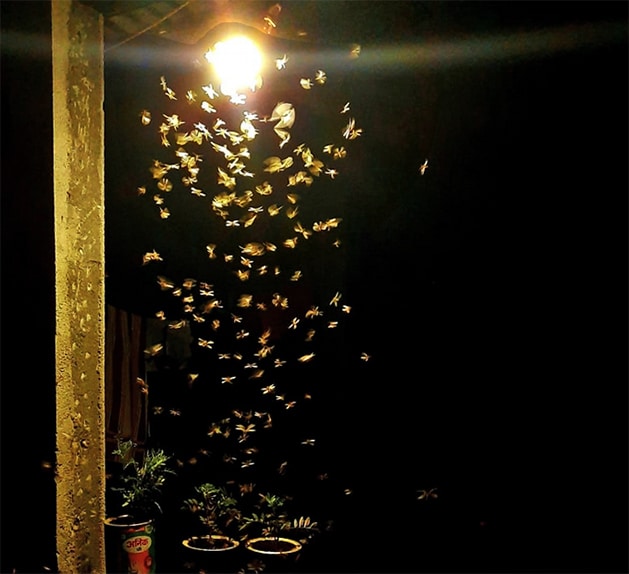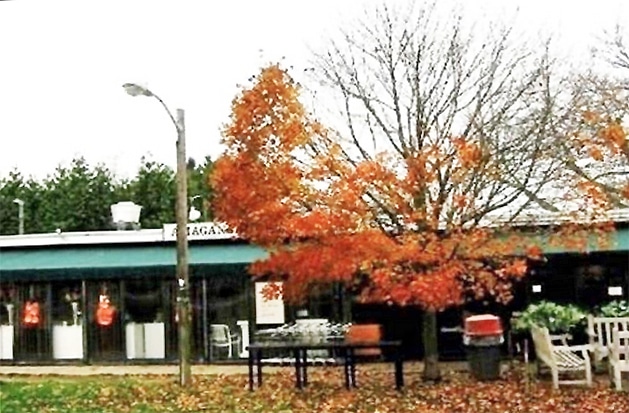 Moths flock to man-made light sources, like this outdoor light, instead of orienting to the moon. This is just one example of how artificial light can interrupt the natural behaviors of wildlife. Photo by Mohibul Hoque
Moths flock to man-made light sources, like this outdoor light, instead of orienting to the moon. This is just one example of how artificial light can interrupt the natural behaviors of wildlife. Photo by Mohibul Hoque
By KELLI HOUSLEY
Valles Caldera National Preserve
(With contributions from Monique Schoustra and Starr Woods)
Humans and animals have always relied on the stars for seasonal awareness, navigation, and understanding. But increases in artificial lighting and light pollution cost us our connection to the past and produce devastating effects on our own health and our environment.
Animals have evolved to use natural cycles of day and night for migration, mating, pollination, and more. But countless species have been adversely affected because of the increase in lighting and light pollution over the years. Artificial light and skyglow have caused disruptions to many species’ natural cycle of life, contributing to reductions in population and even extinction.
Baby sea turtles use the bright, crashing waves to find their way to the sea after they have hatched on sandy beaches. But with city lights outshining the natural light from the ocean, many turn inland and don’t live to see the ocean. Hundreds of bird and butterfly species depend on celestial navigation for their seasonal migrations. But exposure to artificial light can disrupt these journeys, taking them out of their normal routes and causing many fatalities every year.
Light pollution interferes with bioluminescence and mating calls for attracting mates. Fireflies, tree frogs, and other nocturnal animals are unable to mate normally due to the increase in artificial light, resulting in shrinking populations.
Insects are also easily attracted to bright outdoor lights, drawing them out of their natural ecosystems. This, in turn, causes their predators, like bats, to leave their ecosystems too, making them more vulnerable as prey to snakes, birds, or even domestic cats.
We humans also suffer from light pollution. Keeping lights on at night affects our own circadian rhythms, which causes a decrease in melatonin. Melatonin can not only induce sleep, but it boosts the immune system and lowers cholesterol when we get a proper night’s sleep. But both light pollution and our reliance on electronic gadgets that emit blue light keep us awake and train our body to not “turn off” at night.
Keeping lights on consistently also leads to a higher risk of obesity, depression, diabetes, and other health issues. Even though we are not a nocturnal species, humans have evolved to be dependent on the balance between light and dark — and when we tip the scales of that balance, we run the risk of a host of negative health effects.
As devastating as light pollution can be to our health and our environment, the good news is we can do something about it! Turning off lights you do not use — or even closing the curtains at night — will help in reducing the impact of skyglow on the environment and our health. In addition, turning off electronics or adjusting their color output will help re-establish our own circadian rhythms. Changing our outdoor lights and educating and working with others to reduce light pollution in our communities can also be part of the solution.
Want to know more about what you can do about light pollution? Stay tuned for future articles in the coming weeks from the Jemez Mountains Night Sky Coalition about light pollution and our role in reversing its effects — including some tips on how to look for good night-sky friendly lighting.
This article is the second in a series planned by the JMNSC to celebrate International Dark Sky Week (April 5-12) and Earth Day (April 22). Information on light pollution and other topics is available from the International Dark-Sky Association at www.darksky.org.
For more information about the Jemez Mountains Night Sky Coalition visit https://peecnature.org/learn/dark-skies/.
 A tree in autumn with its side nearest the lamp clearly holding on to its leaves. Photo by Bettymaya Foott
A tree in autumn with its side nearest the lamp clearly holding on to its leaves. Photo by Bettymaya Foott

